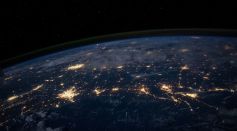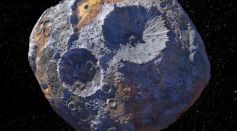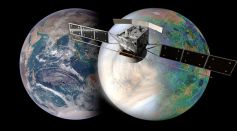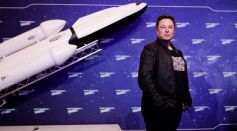Tags: Earth
Giant Magnetic Tunnel Within Solar System: This Mystery Item 'Covers' Earth, Other Stars in Milky Way Galaxy
What Was Mars Like in the Past? Scientists Say Red Planet Was More Beautiful Than Earth Before

Salt of The Earth,Ltd. Teamed Up With Tel Hai College Institute to Bring Innovation to the Table

Melon-Sized Meteorite Crashes Through a Woman's Roof in Canada; What are the Odds of Getting Hit By a Space Rock?
Is It Time to Reconsider How Space Firms Dispose Satellites? Scientists Think So!
Nanosatellites are the Future of Satellites: Earth Observation Now Smaller, Cheaper Than Ever
Carbon Arctic Cycle: Further Insight on How This Element is Transferred Between Land, Atmosphere and Ocean Unveiled

Massive Solar Flare Directly Hitting Earth Today: NOAA Issues Geomagnetic Storm Watch

NASA Landsat 9: Secondary Payloads Begin Commissioning To Observe How Climate Change Affects Earth

The Earth is Turning Dark: New Study Reveals Possible Link to Climate Change
Nuking Dangerous Asteroids: Does It Work? Here's What Experiments Show
What Happens When Solar Wind Hits Earth? Experts Explain Using Sound Waves [LISTEN]

Mysterious Metal-Rich Near-Earth Asteroid Can Be Mined Someday, Study Says
Earth's Evolution: Photosynthesis Might Have Started 400 Million Years Before the Great Oxidation
Largest Comet Bigger Than Mars Moons Heading Towards Solar System in 10 Years; Scientists Say There’s No Need To Panic

European Space Agency Prepares for a Venus Flyby Through EnVision Probe
French Astronomer Thomas Pesquet Captures Stunning Aurora Glowing To Earth From ISS
Can NASA James Webb Space Telescope's Atmosphere Detection Feature Find Life? Here's What Experts Say
Astronomers Detected Clouds on Distant Exoplanet WASP-127b, Revealing the Upper Structure of Its Atmosphere

Elon Musk's Inspiration for His Love of Space: Increasing the Scope, Scale of Human Civilization Beyond Earth
Most Popular

Recycling Myths vs Facts: What Actually Gets Recycled and How to Do It Right

What Is Conservation Biology? Key Strategies to Protect Species and Habitats

Allergies Explained: What Happens in Your Body During an Allergic Reaction

Types of Pollution: Air, Water, Soil, Noise, and Their Health Effects




